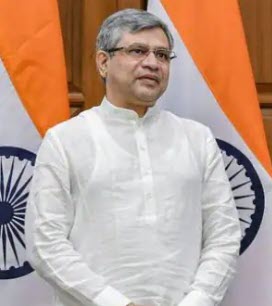One of the major changes that we notice in the Modi cabinet announced on 7th July 2o21 is that Mr Ashwin Vaishnav, has taken over as the new Minister of IT in place of Mr Ravishankar Prasad. He will be holding the IT ministry along with the heavy weight Railway ministry. Even in the earlier ministry, IT had been clubbed with Law but Law was relatively a lower weight portfolio compared to Railways. Now Mr Kiren Rijiju will be exclusively in charge of Law and Justice.
We may note that Mrs Meenakshi Lekhi who headed the Joint Parliamentary Committee (JPC) on Personal Data Protection Bill 2019 has been appointed the Minister of State in the Ministry of External Affairs; and Minister of State in the Ministry of Culture. Mr Rajeev Chandrashekar who was also in the JPC and a known IT aware person gets Minister of State in the Ministry of Skill Development and Entrepreneurship; and Minister of State in the Ministry of Electronics and Information Technology.
The Ministry of I&B will also have a new face in Mr Anurag Thakur and it is significant that Mr Prakash Javdekar has vacated the ministry.
Our best wishes to all the new ministers.
However, the developments clearly show that Twitter and WhatsApp have won the battle against “Data Sovereignty” for the time being. The removal of both Ravishankar Prasad and Javdekar simultaneously and the allocation of portfolios indicate that the influence of the Twitter-Facebook lobby has ensured that all known faces that were taking a tough stand against the hegemony of the Social media giants have been ousted.
We donot know if the new ministers will be lenient on the principles of Data Sovereignty, Data Protection, Cyber Security etc which were in active discussion in the last few months. We need to wait and see the new policy statements from the incumbent ministers to understand how the scenario unfolds.
India had one global leadership opportunity in the field of IT and it appears that it has not been nurtured. Had a separate ministry been created for IT and Telecom, thrust could have been given for IT in industry with AI, BigData, 3D printing, Robotics, Industry 4.0, Hardware development, Indigenous OS development, Indigenous social media platforms, regulation of Mobile Apps and Gaming etc., which required close attention.
The opportunity has been squarely missed. The IT therefore has an apparent setback.
The silver lining however is that Mr Ashwin is an MTech from IIT Kanpur and an MBA from Wharton University. Though his experience appears to be more in the manufacturing sector, one can expect that he would be able to bring forth his vast management experience into the discharge of his responsibilities as Minister of IT. It may however require a little time for him to adapt to the requirements of the IT ministry. This could put many of the projects under the IT ministry in the back burner and delay the developments.
Mr Rajeev Chandrashekar being the MOS in MeitY is another silver line and if he can assume stronger role in the affairs of the ministry, we can expect that there could be continuity in some of the policies related to Data Protection. At least in Rajeev Chandrashekar, we can expect a person who understands IT to the core. He was a successful IT entrepreneur, has an in depth understanding of technology and has been a member of the JPC as well. He is therefore the hope of Indian IT for the time being. We wish that under Mr Rajeev Chandrashekar, MeitY will be groomed to be an independent ministry in future, as IT is an all pervasive tool that can transform India into a real global giant.
It is time however to hope for the best and wait.
Naavi









